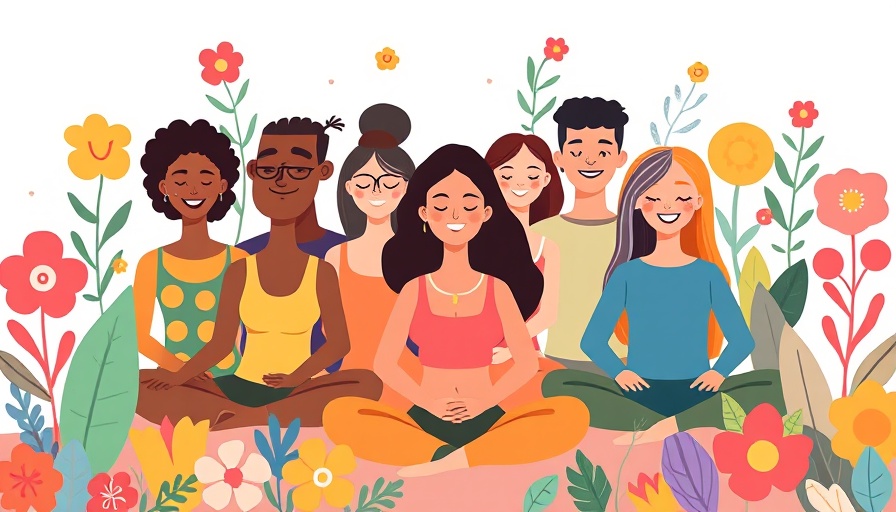
The Journey to Mindfulness: A BIPOC Perspective
Troy Landrum’s story embodies the struggles many educators face, particularly those who serve marginalized communities. After a decade of working in youth development and education, he found himself overwhelmed by burnout, grappling with feelings of imposter syndrome and secondhand trauma. His unwavering commitment to supporting young people through the justice system and beyond had drained him, leaving a mere shell where hope used to reside.
Echoes of Burnout and the Need for Community
Landrum's experience is not unique. The emotional toll faced by educators—especially those from the BIPOC community who often bear the weight of societal inequities—can lead to debilitating burnout. Rising exhaustion among teachers and youth workers poses a dire concern for educational environments, which should be nurturing spaces. For many professionals like Landrum, the call to support others may overshadow the necessary self-care that fuels their own resilience.
Finding Your Space: A Mindfulness Retreat for Healing
Amidst the chaos, Landrum discovered a glimmer of hope—his attendance at a mindfulness retreat specifically designed for Black, Indigenous, and People of Color educators. The retreat, organized by Space Between, aimed to foster communal healing through mindfulness practices. Here, participants found space to lay down their burdens, reclaim their hope, and reconnect with their bodies. The unusual idea that such a retreat could offer solace for educators who often feel so burdened by their roles was both uplifting and pivotal for Landrum.
Rediscovering Self-Worth and Community
Initially, Landrum struggled to reconcile his identity as a youth worker with that of an educator. Growing up surrounded by family members in traditional teaching roles, he viewed his contributions as inadequate. This feeling of being an imposter is prevalent among many educators, especially those who enter the profession from non-traditional routes. At the retreat, however, he began to understand the value of his work and the importance of community support.
The Power of Mindfulness in Education
Mindfulness practices can significantly influence both personal and professional well-being. As Landrum engaged with mindfulness exercises, he embraced a journey of self-reflection and authenticity. By recognizing his own significance within the educational landscape, he was able to find healing and renewed purpose. This transformative experience illustrates how mindfulness can reinvigorate one’s passion and effectiveness in serving others.
Connection Through Shared Experience
The retreat was not just a space for relaxation; it amplified the collective experiences of educators from diverse backgrounds. Conversations flowed as participants shared their stories, encompassing struggles, triumphs, and the shared burden of service. BIPOC educators often carry unique challenges influenced by systemic issues and cultural expectations. Engaging in dialogue with peers in a supportive environment strengthened bonds and established a sense of belonging.
Looking Ahead: Hope for Future Generations
As Landrum emerged from the retreat, he mirrored the hope he wished to instill in his young mentees. With rekindled optimism, he now recognizes that maintaining personal wellness is essential to effectively guide others. His journey demonstrates how prioritizing mental health and seeking connections within the community can create ripples of positive change not just for individuals but for the youth they serve.
Conclusion: Embracing Self and Community
Ultimately, Troy Landrum’s insight into the transformative power of mindfulness serves as a beacon for all educators. It reminds us that in order to help empower young minds, they must first embrace their own well-being. While the challenges in education remain, so too does the potential for healing through community and mindfulness. Thus, the awareness of our impact on those we teach can help not only ourselves but also the future generations we aim to uplift.
Mindfulness retreats can create profound opportunities for BIPOC educators and youth workers, reminding them that they are integral parts of a larger mission—nurturing and empowering the next generation. Embracing both individual and communal healing can lead to a stronger, brighter future for educators and students alike.
 Add Row
Add Row  Add
Add 




Write A Comment